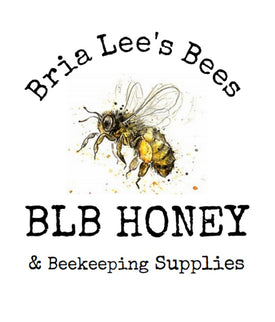Crop Pollination Services 2025
We offer strong hives for pollinating a variety of crops in Southwestern Ontario. Please call to discuss your crop pollination needs with us.
519-683-4363
FEE PER HIVE: PLEASE CONTACT FOR PRICING
Crops we've pollinated at BLB Honey:
Apples, Blueberries, Strawberries, Raspberries, Squash, Sunflowers, Cucumbers, Melons, and Buckwheat.
Seeking: Pumpkin, Squash, Canola
Let us know what you need pollinated this year!
Email: blbhoneyinfo@gmail.com
Phone: 519 683 4363
Cucumbers

Sunflowers

Apples

Strawberries and Raspberries



Buckwheat

Hive Stocking Rates
| Apples | Standard | 1 hive per acre |
| Semi-Dwarf | 2 hives per acre | |
| Dwarf | 3 hives per acre | |
| Pears | Plums | 1 hive per acre |
| Peaches | Nectarines | 1 hive per acre |
| Cherries | Apricots | 1 hive per acre |
Small Fruit Crops
| Cranberries | 3 hives per acre |
| Blueberries | 3 hives per acre |
| Raspberries | 1 hive per acre |
| Strawberries | 1 hive per acre |
Other Field Crops require 1 Hive per acre
| Cucumbers | Melons | Pumpkins |
| Squash | Zucchini | Ginseng |
| Canola | Buckwheat | Sunflowers |
| Clovers | Trefoil | Alfalfa |
Don't Spray the Bees
Poisoning of bees by orchard sprays is of great concern to beekeepers. Spraying of insecticides when trees or plants are in bloom is a violation of the Bees Act and must be avoided.
*Source: https://www.ontariobee.com/sales-and-services/pollination-services
Effects of Bees on Fruit
Flowers that are visited more often by bees will produce larger and more uniform fruit than those visited less often. This beneficial effect of pollination is most obvious in tree fruit.
The Importance of Bees: Pollination
The most important thing that bees do is pollinate. Pollination is needed for plants to reproduce, and so many plants depend on bees or other insects as pollinators.
When a bee collects nectar and pollen from the flower of a plant, some pollen from the stamens—the male reproductive organ of the flower—sticks to the hairs of her body. When she visits the next flower, some of this pollen is rubbed off onto the stigma, or tip of the pistil—the female reproductive organ of the flower. When this happens, fertilization is possible, and a fruit, carrying seeds, can develop.
- Alfalfa
- Almonds
- Apples
- Asparagus
- Beans
- Beets
- Blackberries
- Blueberries
- Brussels sprouts
- Buckwheat
- Cabbage
- Cantaloupe
- Cauliflower
- Celery
- Cherries
- Chestnuts
- Chives
- Clover
- Cranberries
- Cucumber
- Currants
- Eggplant
- Flax
- Garlic
- Gooseberries
- Grapes
- Horseradish
- Kale
- Lettuce
- Mustard
- Onions
- Parsley
- Peaches
- Pears
- Plums
- Pumpkins
- Radishes
- Raspberries
- Rhubarb
- Squash
- Strawberries
- Sunflowers
- Sweet potatoes
- Turnip
-
Watermelon https://bees.techno-science.ca/english/bees/pollination/default.php

